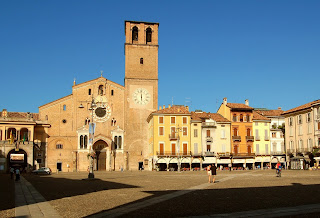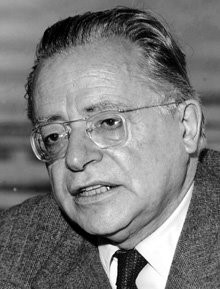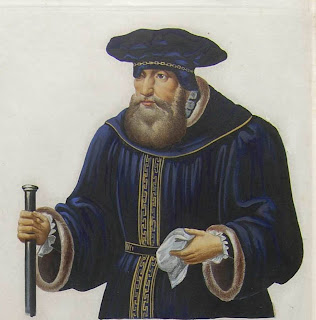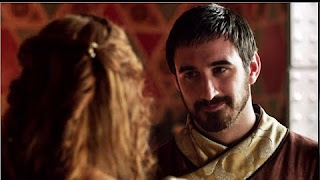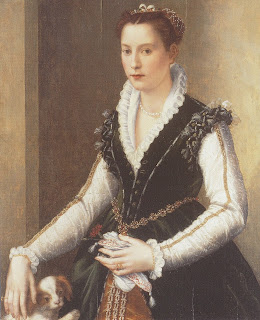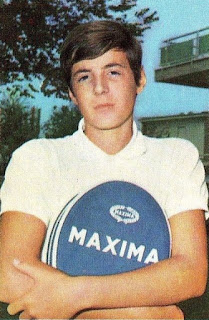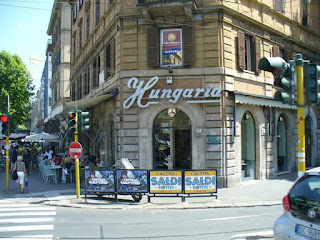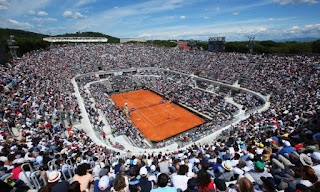Missionary who was directed to the US by the Pope
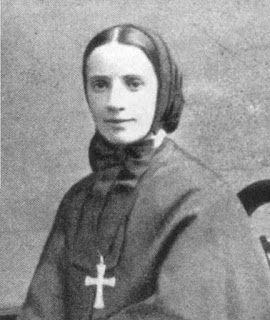 |
| Saint Frances was encouraged by the Pope to go to the United States to help Italian immigrants |
Frances did such good in her life that she become the first naturalised citizen of the
United States to be canonised in 1946.
She had been born into a family of cherry tree farmers, the
youngest of 13 children. She was two months premature and remained in delicate
health all her life.
After her parents died she applied for admission to the
Daughters of the Sacred Heart but was told she was too frail for the life.
She became the headmistress of an orphanage in Codogno, about 30km (19 miles) from her home town, where she drew in other women to live a religious life with her.
She took religious vows in 1877, adding Xavier to her name
to honour Francis Xavier, the patron saint of missionary service.
Along with some of the other women who had taken religious
vows, she founded the Missionary Sisters of the Sacred Heart of Jesus.
Frances went to seek Pope Leo X’s approval to establish missions
in China but he suggested she went to the United States instead, to help the
many Italian immigrants who were living in poverty.
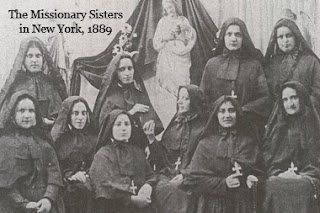 |
| The Missionary Sisters of the Sacred Heart of Jesus began to organise themselves soon after Frances arrived in New York |
She also founded Columbus Hospital and Italian Hospital,
which were merged into the Cabrini Medical Center in the 1980s.
In Chicago, she opened Columbus Extension Hospital in the
heart of the city’s Italian community. Her name lives on today in Chicago’s
Cabrini Street.
In total she founded 67 institutions in the United States,
South America and Europe and became a naturalised US citizen in 1909.
Frances died at the age of 67 at Columbus Hospital in Chicago
in 1917 and was interred at Saint Cabrini Home in New York.
But her body was exhumed in 1931 as part of the canonisation
process. Her head is now preserved in the chapel of the congregation’s
international motherhouse in Rome.
An arm is at a shrine in Chicago and most of her body is at
a shrine in New York.
Frances was beatified in 1938 by Pope Pius XI and canonised
in 1946 by Pope Pius XII.
Her beatification miracle involved restoring the sight and
healing the disfigurements of a one-day-old baby. The same baby attended her
canonisation ceremony years later and went on to become a priest.
Her canonisation miracle involved the healing of a
terminally ill member of her congregation.
Saint Frances Xavier Cabrini is now the patron saint of
immigrants and there are shrines, churches and educational establishments
dedicated to Saint Frances all over the United States.
Sant’Angelo Lodigiano, where Saint Frances was born, is a town
in Lombardy in the province of Lodi. It is about 30 kilometres south east of
Milan and about 12 kilometres south west of Lodi. Piazza della Vittoria, the
main square in Lodi, features porticoes on all four sides and has been listed
by the Italian Touring Club among the most beautiful squares in Italy.
Milan’s Central Station was renamed Stazione Francesca
Cabrini in 2010 in memory of the patron saint of immigrants. The Vatican
newspaper, L’Osservatore Romano, explained at the time that ‘stations where
people pass through who are far from home, often alone and therefore extremely
fragile and exposed to dangers, are difficult places, and above all, are points
of arrival and departure for migratory groups.’ Milano Centrale is one of the
main railway stations in Europe. Its cornerstone was laid by King Victor
Emmanuel III in Piazza Duca d’Aosta in 1906. The architect, Ulisse Stacchini,
won the contest to design the station in 1912.
